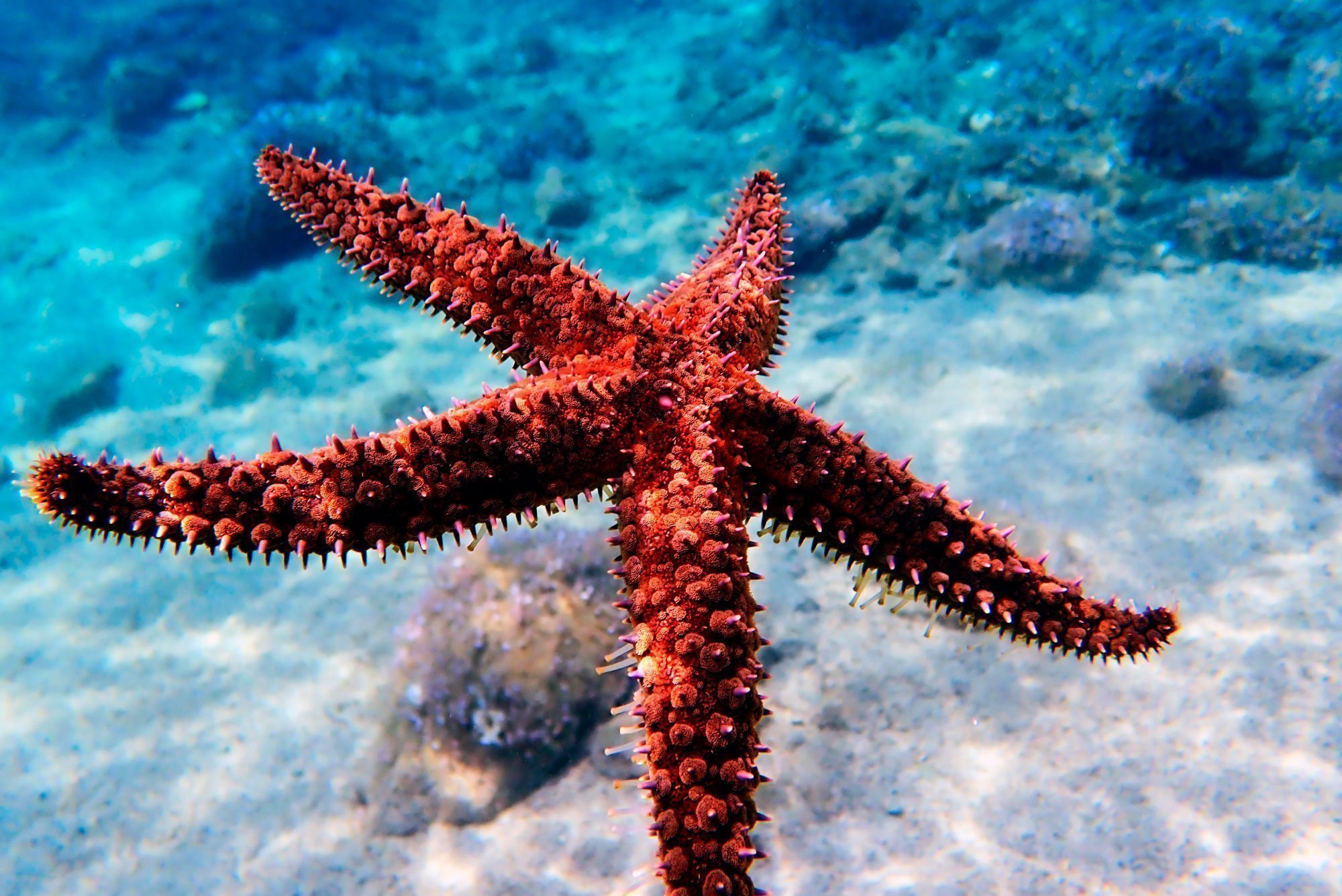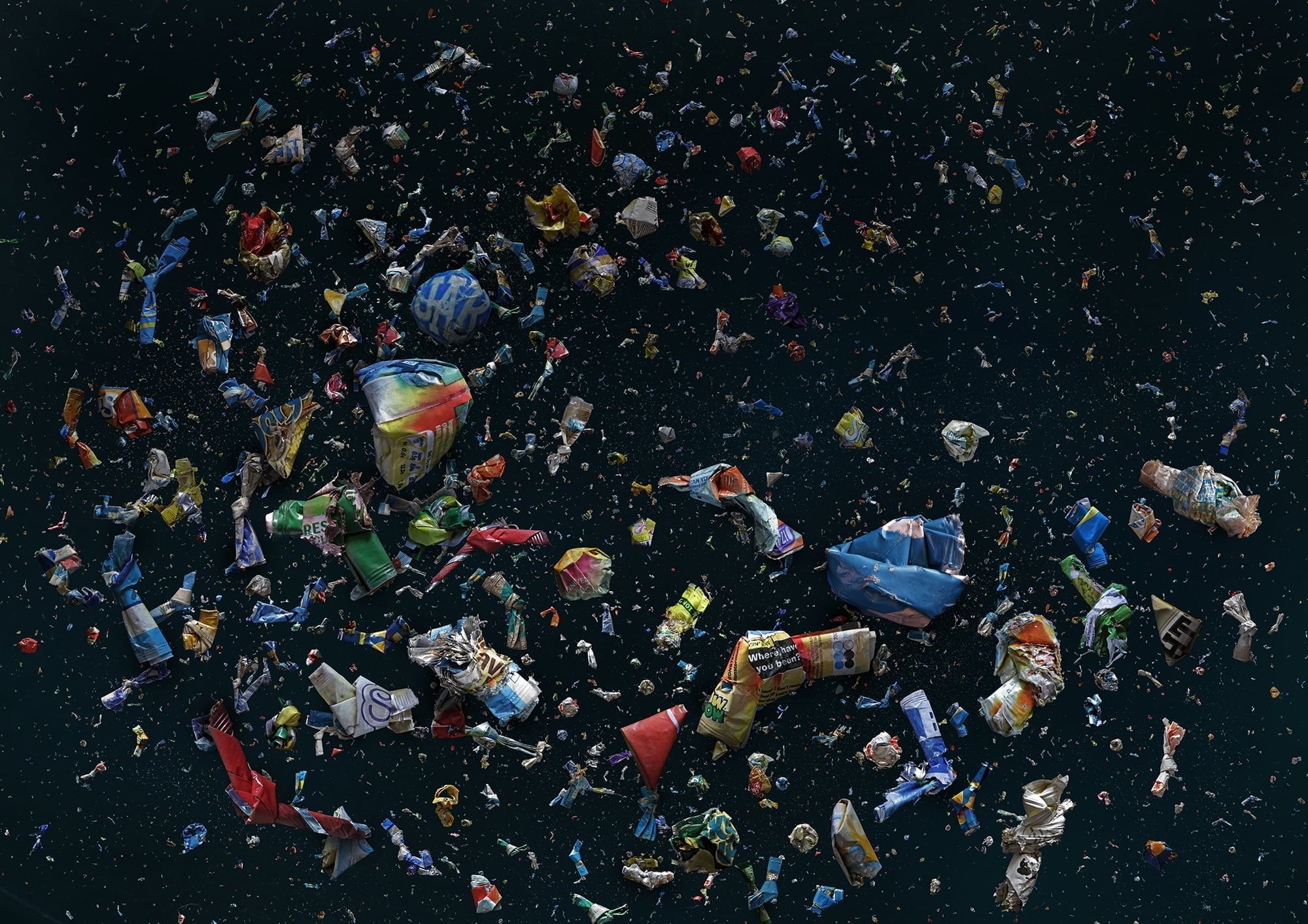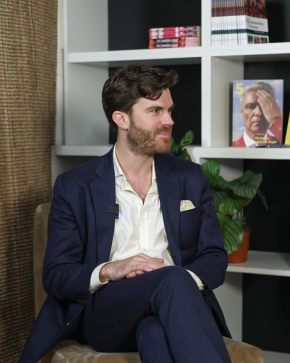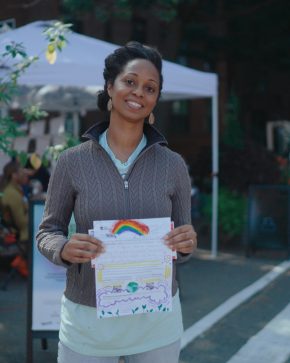It might look unassuming, but the humble starfish is a species with the power to keep entire marine ecosystems in balance. Inspired by this knowledge, one scientist set out to find the businesses with the same power to determine the oceans’ fate – and spur them to action.
The key takeaway
- A handful of big seafood businesses have a disproportionate effect on the health of our oceans. That’s why, with the help of scientists from Sweden, they’ve come together to agree on real, immediate action to protect the marine environment.
Sometimes in the ocean, one species can carry the weight of an entire ecosystem. Take the shark. By eating up fish, particularly those that are weak or carry disease, these predators keep populations at a level that the environment can support.
Sharks are one of the largest and most powerful creatures in the ocean, but humbler ones are vital too. Starfish, for instance, prey on mussels which would otherwise proliferate uncontrollably, taking up space and resources. Just like sharks, starfish are a ‘keystone species’, whose contribution is crucial to keeping the whole show running.
One Swedish professor, grappling with how to save the world’s oceans, realised that the same might be true for businesses.

“Who has the power to influence what we do to the ocean? We realised that, of course, it’s corporations”
Professor Henrik Österblom
Big influence
In 2014 Henrik Österblom, a professor of environmental science at Stockholm University and science director of the influential Stockholm Resilience Centre, was among a group of researchers tasked with mapping out scenarios for the future of the oceans. The challenges facing the world’s oceans are serious and urgent – climate change, plastics, pollution, overfishing, acidification – and Österblom was determined to not just predict the future but shape it. The key question, he tells 5, was: “Who has the power to influence what we do to the ocean? And we realised that, of course, it’s corporations.”
Two years later Österblom found himself in a room with the CEOs of the biggest seafood companies in the world. Gathered from Japan, Norway, Thailand, Korea and the United States, they represented businesses involved in everything from salmon farming to catching white fish in Japan and producing feed for fish farms.
“They ended up being more interested in the project than we could have ever imagined”
Professor Henrik Österblom
This small group comprised the true keystone species of the fishing industry. Just getting them around a table was a big achievement, and Österblom hoped it would be the start of a productive conversation which – who knows – might one day lead to the companies working together to test out his theory about the impact they could have on the ocean. To his surprise, “they immediately wanted to engage,” he says. “Which was a bit of a shock to us, as we had not expected them to be so keen on the experiment. They ended up being more interested in the project than we could have ever imagined.”
At the meeting, Österblom and his team summed up the pressing challenges facing the seafood industry and the ocean in general – challenges that no one around the table could face alone. The eight companies wasted little time in forming a coalition called Seafood Business for Ocean Stewardship, or SeaBOS. The CEOs outlined a far-reaching agenda focused on sustainable fishing, and each one signed it.
“We have our team of researchers, but you can’t get far without joining forces with other companies”
Therese Log Bergjord, Skretting
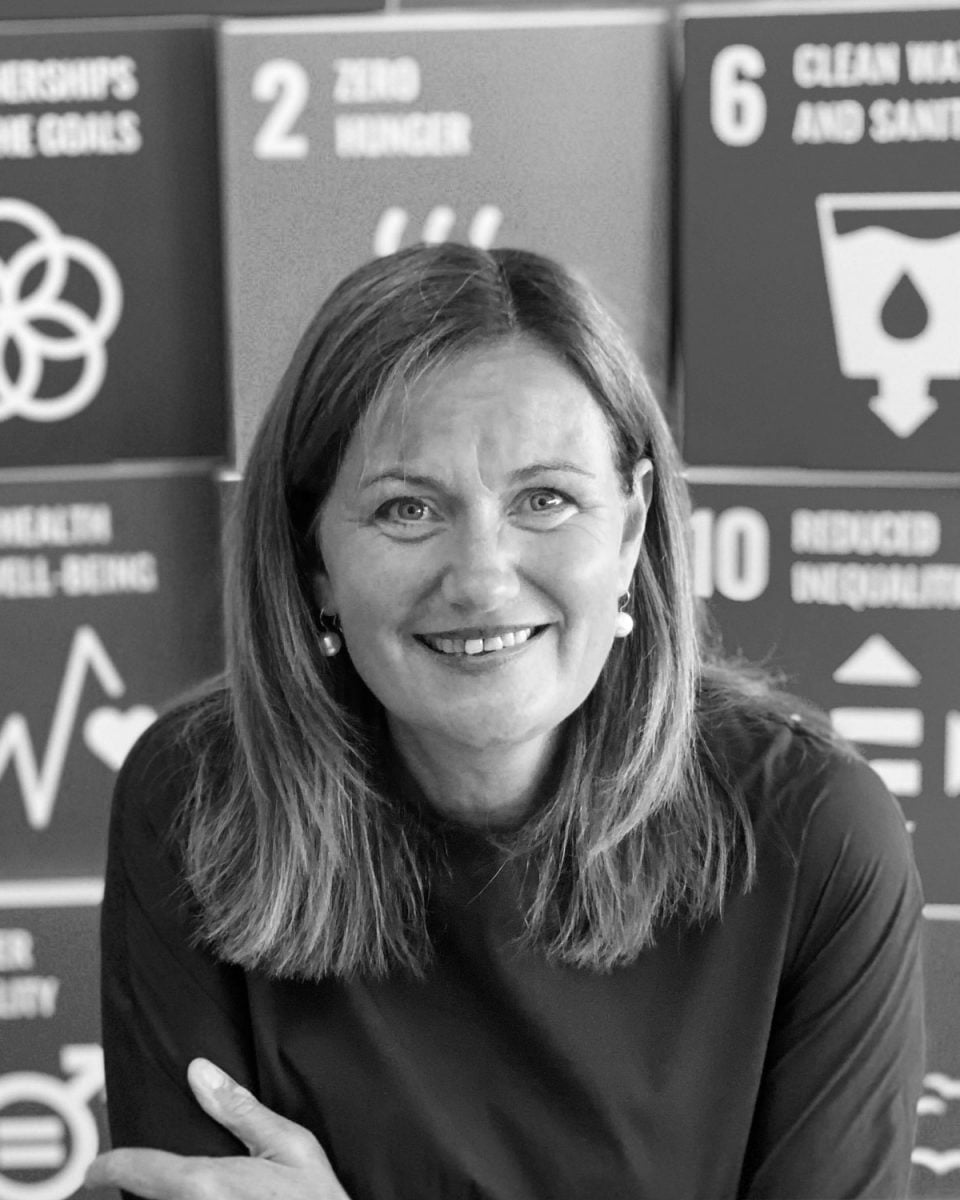
“As a large company, we have our team of researchers, but you soon realise you can’t get very far without joining forces with other companies,” says Therese Log Bergjord, CEO of Skretting, a major supplier of feed for fish farms and a SeaBOS member.
By the time of the group’s second meeting six months later, they were joined by two more major businesses. “We now had the biggest seafood companies in the world working with us,” says Österblom.
The group’s champions include Crown Princess Victoria of Sweden – a prominent advocate of the United Nations Sustainable Development Goals. Karolin Johansson, a former representative of the royal household who now works with SeaBOS, says these companies mean business. “SeaBOS is more than a think tank or forum for discussion, nor is it a means to implement a quick fix solution or fluff to add to a company’s next quarterly report,” she says.
Indeed, SeaBOS now runs six task forces, each bringing together scientific experts with representatives of the member companies – and they’ve been busy. In December its members announced that by the end of 2021 they aim to eradicate all illegal fishing and forced labour from their operations, and work towards ending it in their supply chains too. They’re also working with the Global Ghost Gear Initiative to address the problem of lost and abandoned fishing gear which litters the oceans. And they’ve committed to taking first steps on two potentially even more significant projects this year, by agreeing CO2 reduction targets, and developing a strategy to reduce impacts on endangered species. It’s the first agreement of its kind.
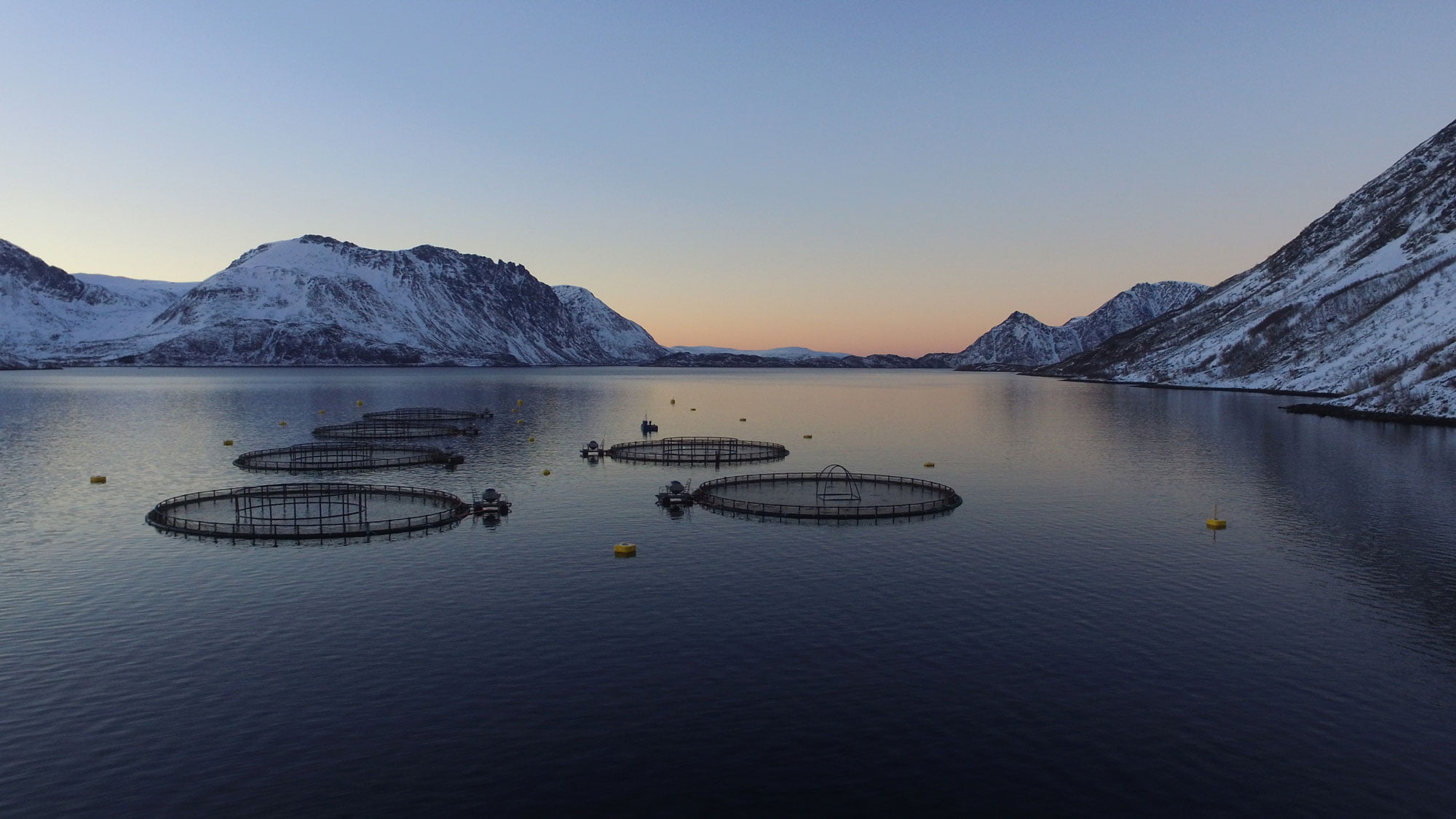
Ideas to action
Getting the keystone species of the seafood business all on the same page was not something that happened overnight. In fact, when Österblom and his team started out, they weren’t even sure who the world’s biggest seafood companies were. The first job was to find out. By poring over official filings from numerous companies, digging out obscure industry reports and collaborating with investigative journalists, Österblom and his team gradually built up a picture of the businesses they believed were most influential. They confirmed that only thirteen companies controlled 11-15% of the global catch of fish. These include companies like Japan’s Maruha Nichiro, Korea’s Dongwon and Norway’s Mowi – not household names, but hugely powerful nonetheless. “They were dominating white fish, north Atlantic fish and salmon farming,” says Österblom. “Wherever you looked in seafood, these companies were the big actors.”
Not only were these companies dominant in terms of their operations, they also wielded considerable influence through involvement with industry organisations and certification bodies. Österblom says: “We said to ourselves, let’s test if they are keystone actors and see whether they are big and powerful enough to influence the future of seafood.” The aim, he says, was nothing less than to “reshape the entire seafood production system”.
Business as usual?
Pushing businesses to become more environmentally responsible isn’t new – in the last decade, many industries, including fashion, tourism and tech, have become more aware of their carbon footprint and begun to re-evaluate how they operate.
In the knowledge that the health of the oceans is at stake, these seafood businesses, instead of acting alone or waiting for regulators, have come together to make changes. Ocean heat is at record levels, and seas are at risk of acidification and oxygen loss due to carbon emissions. Illegal fishing threatens fish populations and the health of ecosystems. Coastal waters are deteriorating due to pollution, while waste plastic continues to choke waters and clog up shores. On top of the environmental concerns comes the issue of forced and child labour – which is believed to be prevalent in fishing throughout the world.
SeaBOS’s members realise that business as usual may lead to no business at all. The set of common goals they agreed in December signals a change of course: a commitment to voluntarily cooperate on concrete action, built on a solid basis of science.
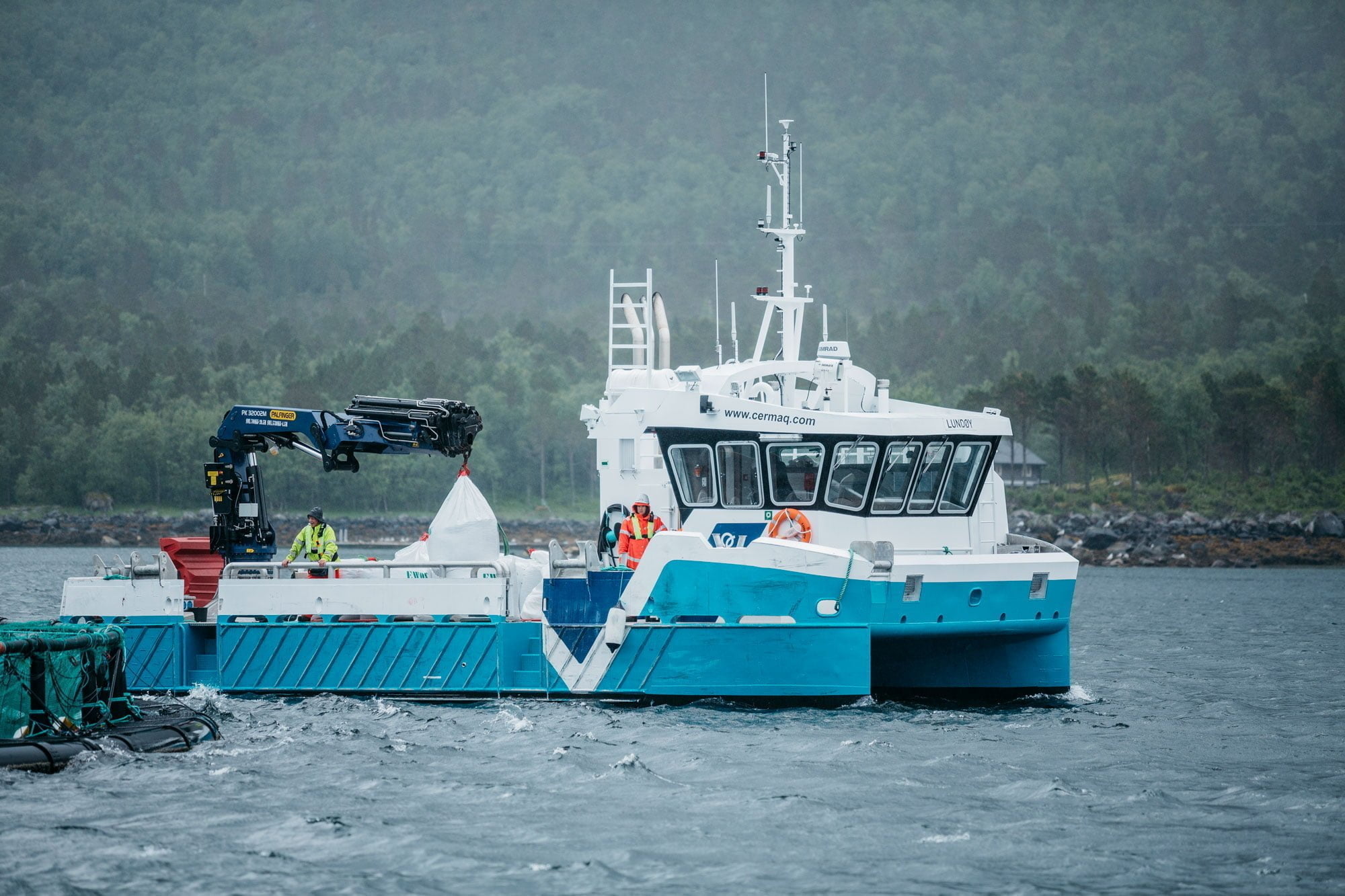
Without a healthy ocean, seafood businesses know they wouldn’t have a business at all. Photo: Cermaq/Stockholm Resilience Centre
Karolin Johansson sees SeaBOS as a guiding example of voluntary collaboration between science and the private sector, which can prompt action from the public sector too. Committed business leaders, she says, “can engage in a way that regulators rarely do, by communicating the benefits of voluntary actions that will immediately set the industry on a more sustainable and responsible trajectory,” says Johansson. “First-movers can reap reputational benefits for their responsible practices, but ultimately they need regulators and governments to step in and codify norms of best practice into law so that industry laggards are also forced to catch up. If this virtuous and reinforcing cycle gains steam, the benefits for human wellbeing and the biosphere will be substantial.”
Therese Log Bergjord of Skretting is the current chair of SeaBOS. She says the initiative has helped the company focus on a higher purpose. “We had already worked in sustainability for decades,” says Bergjord, “but it’s a long and a complicated journey to make our owners and organisation fully understand what it means both for our business and for the planet.”
“If we all come together, we can actually deliver more results that are beneficial to everyone”
Therese Log Bergjord, Skretting
For Skretting, ocean pollution is a huge challenge. “We can’t have healthy animals without having sustainability in the ocean itself,” Bergjord says. “We work together on sustainability, and we don’t compete against each other, which might sound like a very idealistic thing. However, you can achieve so much more if you can encourage each other on areas where one is weak and one is strong, and so if we all come together, we can actually deliver more results that are beneficial to everyone.”
Indeed, that’s the essence of being a keystone actor.
It will take time to see whether, like sharks or starfish, these heavy-hitting businesses can really change the state of the oceans. But they’ve already demonstrated something important: that they can come together and cooperate for the greater good.
And now
- Get yourself an Ocean Bottle, and help keep plastic out of the ocean
- Discover more about sustainability science from the Stockholm Resilience Centre
